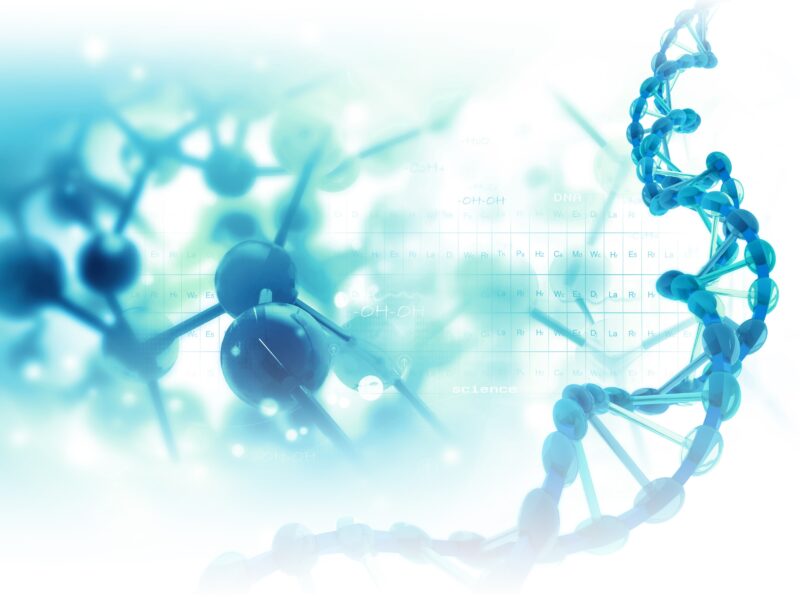Antibodies to Spinal Muscular Atrophy Gene Therapy Vector May Dissipate, Allowing More Children to Receive Treatment
Antibodies to Spinal Muscular Atrophy Gene Therapy Vector May Dissipate, Allowing More Children to Receive Treatment https://pediatricsnationwide.org/wp-content/uploads/2021/01/89925896-1-1024x681.jpg 1024 681 Katie Brind'Amour, PhD, MS, CHES Katie Brind'Amour, PhD, MS, CHES https://pediatricsnationwide.org/wp-content/uploads/2021/03/Katie-B-portrait.gif- May 24, 2021
- Katie Brind'Amour, PhD, MS, CHES

A review of antibody titers for SMA patients revealed that levels may decrease with time, potentially enabling delayed dosing for children who otherwise might have been excluded from life-saving gene therapy.
Adeno-associated viral (AAV) vectors are used to deliver gene therapies such as onasemnogene abeparvovec-xioi (ZOLGENSMA®), a recently approved gene therapy for spinal muscular atrophy (SMA). In some people, however, AAVs may trigger an immune response when delivered to anyone with pre-existing antibodies to the serotype used for therapy delivery.
AAV serotype 9 is known to pass the blood-brain barrier for effective delivery of gene therapies to the brain, and is also known to have low antibody rates in most people, making it ideal for use in neurodegenerative diseases such as SMA. But anyone with anti-AAV9 antibody titers >1:50 is refused the therapy due to theoretical concerns about provoking adverse events and rendering the therapy inert. Now, a review of clinical trial and early market access data suggests that some children with initial disqualifying antibody tests may actually become eligible just a few weeks later.
“The data were compiled from global studies of the gene therapy that collected pre-therapy antibody titers and follow-up tests for children and their mothers,” says Jerry Mendell, MD, attending neurologist at Nationwide Children’s Hospital and a renowned expert in gene therapy for neuromuscular diseases. He and colleagues across the country collaborated to review the antibody titer results to help determine when and whether re-testing antibodies may be valuable. “It doesn’t always happen, but in several cases, children’s antibody levels went down low enough over the course of a few weeks to allow dosing. Since this disease has such devastating consequences, we don’t want to unnecessarily exclude anyone; the fact that even a small percentage of additional children can get treatment is very good news.”
The research, published in Molecular Therapy Methods & Clinical Development, found that 7.7% (n=15) of the 196 patients had elevated anti-AAV9 levels at initial screening. However, only 5.6% of patients had elevated antibody titers on their final screening tests; 4 out of the 12 patients who were retested after a failed anti-AAV9 antibody titer at screening were eventually able to receive the therapy when titer results fell below or equal to 1:50 on a follow-up test.
Babies may have anti-AAV9 antibodies due to passive placental transfer from their mothers, explaining the gradual depletion over the first several months after birth (the study found that 14.8% (n=23) of 155 mothers had antibody titers >1:50). While most mother-infant pairs had matching antibody titer results, the ones that didn’t often showed the child had lower values, diminishing with age. Other children—particularly older infants—may have antibodies due to actual exposure to adeno-associated viruses.
“Regardless of the potential cause for these changes, it is worth re-testing antibody titers after three or four weeks to see if their levels have come down, particularly for young infants,” says Dr. Mendell, who is also the Dwight E. Peters and Juanita R. Curran Endowed Chair in Pediatric Research at the Abigail Wexner Research Institute at Nationwide Children’s and professor of pediatrics and neurology at The Ohio State University.
“The next step will be to figure out whether the theoretical risk of elevated anti-AAV9 antibodies is real and worth forgoing such an important therapeutic opportunity, and whether there are effective ways to overcome or reduce a person’s antibody titers enough to make dosing safe.”
One such method under investigation is plasmapheresis, where an individual’s blood is filtered to remove anti-AAV9 antibodies from the body long enough to enable safe dosing. Dr. Mendell’s lab demonstrated the ability to clear such antibodies with plasmapheresis in animal models in 2014, an approach that has since been successfully attempted in hemophilia patients. Another option may involve hemapheresis and administration of Sepharose beads coupled to AAV9 particles to help selectively deplete anti-AAV antibodies (immunoadsorption).
“Understanding the importance—or lack thereof—of antibody levels to a patient’s response to gene therapy could have a substantive impact on eligibility requirements not just for people with SMA, but for patients with a wide variety of other illnesses that now have gene therapies available or under testing,” says Dr. Mendell, whose team is investigating apheresis and medications such as prednisone to suppress potential allergic-type reactions, to enable broader administration of gene therapy to patients with elevated antibody titers moving forward.
References:
- Chicoine LG, Montgomery CL, Bremer WG, Shontz KM, Griffin DA, Heller KN, Lewis S, Malik V, Grose WE, Shilling CJ, Campbell KJ, Preston TJ, Coley BD, Martin PT, Walker CM, Clark KR, Sahenk Z, Mendell JR, Rodino-Klapac LR. Plasmapheresis eliminates the negative impact of AAV antibodies on microdystrophin gene expression following vascular delivery. Molecular Therapy. 2014 Feb;22(2):338-347.
- Day JW, Finkel RS, Mercuri E, Swoboda KJ, Menier M, van Olden R, Tauscher-Wisniewski S, Mendell JR. Adeno-associated virus serotype 9 antibodies in patients screened for treatment with onasemnogene abeparvovec. Molecular Therapy. Methods & Clinical Development. 2021 Feb 24;21:76-82.
Image credit: Adobe Stock
About the author
Katherine (Katie) Brind’Amour is a freelance medical and health science writer based in Pennsylvania. She has written about nearly every therapeutic area for patients, doctors and the general public. Dr. Brind’Amour specializes in health literacy and patient education. She completed her BS and MS degrees in Biology at Arizona State University and her PhD in Health Services Management and Policy at The Ohio State University. She is a Certified Health Education Specialist and is interested in health promotion via health programs and the communication of medical information.
-
Katie Brind'Amour, PhD, MS, CHEShttps://pediatricsnationwide.org/author/katie-brindamour-phd-ms-ches/April 27, 2014
-
Katie Brind'Amour, PhD, MS, CHEShttps://pediatricsnationwide.org/author/katie-brindamour-phd-ms-ches/April 27, 2014
-
Katie Brind'Amour, PhD, MS, CHEShttps://pediatricsnationwide.org/author/katie-brindamour-phd-ms-ches/April 27, 2014
-
Katie Brind'Amour, PhD, MS, CHEShttps://pediatricsnationwide.org/author/katie-brindamour-phd-ms-ches/April 28, 2014
- Post Tags:
- Center for Gene Therapy
- Immunology
- SMA







